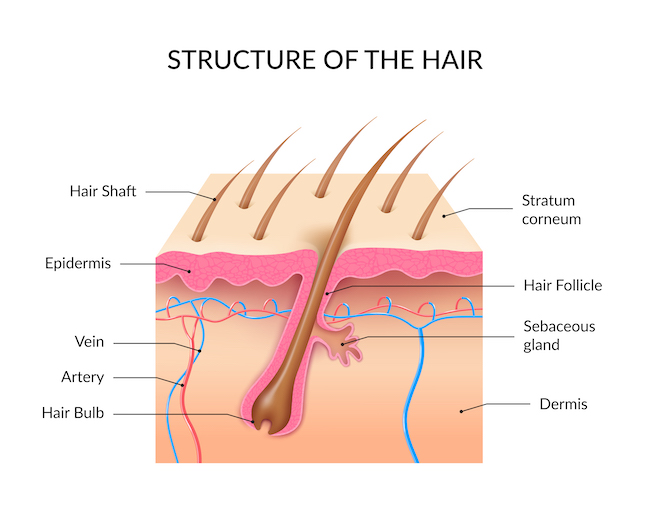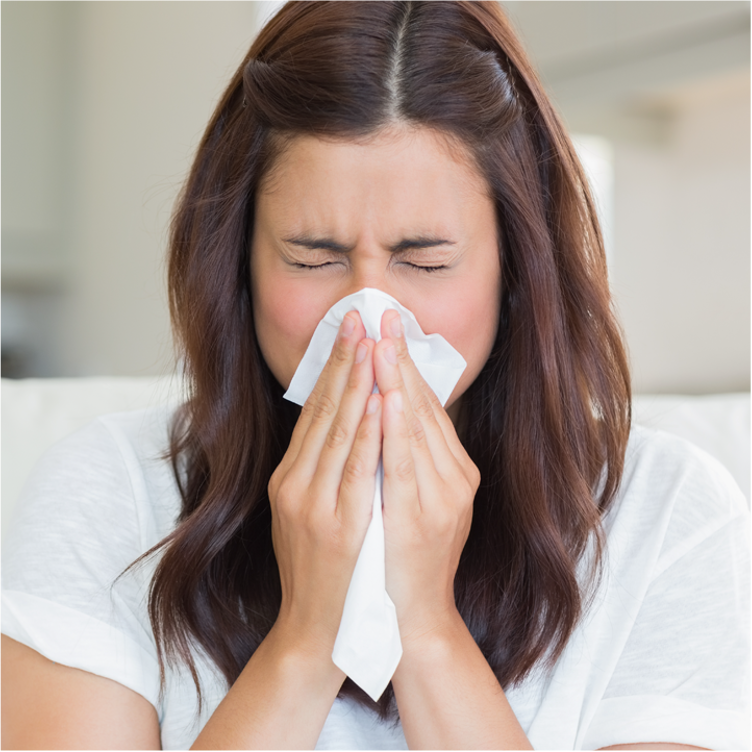
Will finally taking that vacation eliminate your gray hairs?
There is no more obvious visible sign that you are getting old than finding a gray hair on your head. Gray hair has historically been linked to aging, but in modern times it has also become synonymous with stress. Just think of some of our former Presidents who went into office with a head full of colored hair and came out four- or eight- stressful years later fully gray.
Until recently there has not been a direct scientific link between psychological stress and graying hair. A study published last year brought some truth to the notion by showing that stress causes irreversible hair graying in mice (the study is featured on page 8 of the 2020-2021 Educational Guidebook). More recently a group of scientists published a study that goes against the idea that graying is permanent, showing that stress-induced gray hair may be reversible in humans.
But first, how does hair get its color?
Technically, all of our hair actually begins its life having a white color. Hair starts growing under the scalp in a tube-like structure called the hair follicle. A hair bulb at the base of the follicle contains living cells that divide and grow. The cells clump together and harden to build the hair shaft, the part of your hair that grows out of your scalp.
 Pigment cells called melanocytes also live in the hair follicle. They produce a pigment called melanin that gives hair its color. There are two types of melanin, eumelanin (dark pigment) and pheomelanin (light pigment), that blend together in different amounts to make up the wide range of human hair color we see.
Pigment cells called melanocytes also live in the hair follicle. They produce a pigment called melanin that gives hair its color. There are two types of melanin, eumelanin (dark pigment) and pheomelanin (light pigment), that blend together in different amounts to make up the wide range of human hair color we see.
As hair grows up and out of the hair follicle, melanocytes inject melanin pigments into the hair cells. In this way, as your hair grows out of your scalp, it is getting dyed its natural hue. Over time, melanocytes produce less melanin so our hair is dyed less and becomes lighter as we age.
The portion of your hair that you can see growing above the skin is actually made of dead cells which is why getting a haircut is painless. This also means that the natural color of the hair is frozen in time after it has grown out of the scalp. Scientists took advantage of this phenomenon to study the effects of stress on hair color loss.
Mapping hair pigments
To begin studying the impact of psychological stress on hair graying in humans, the research team first developed a method to look at nuanced changes in hair color. When you look at a strand of hair with your bare eyes, it pretty much looks like a single color unless there are drastic differences like when someone has dyed their hair and the dye has partially grown out at the roots. 
With the knowledge that eyeballing hair color would not be precise enough for their study, the team set out to develop a method to assess subtle color changes across single pieces of hair. First, scientists took photos of whole length strands of hair. Then using the digital images of the hair and a computational model the scientists developed, they were able to identify even minute changes in color across the length of a piece of hair.
On average hair grows about 1-1.3 cm per month. By measuring the distance of hair color changes from the scalp end of the hair, the scientists were able to calculate the specific time in the hair strand’s life in which the color change occurred.
Is gray hair reversible?
Relying on their newly developed computational model, the scientists enrolled volunteers and looked at their hair color patterns. Some of the participants who had noteworthy patterns of graying in single-hairs (their hair was mostly pigmented but they had hairs turning gray here or there) were asked to prepare a stress diary where they reviewed their calendars and rated each week’s stress levels.
The scientists were able to line up stressful life events with graying zones on the participants’ hair. They confirmed prior associations between stress and hair graying. Intriguingly, in several cases they also saw a reversal of graying with the lifting of stress. 
The scientists also found changes in more than 300 proteins when hair color changed. Gray hairs upregulated proteins involved in energy metabolism, mitochondria, and antioxidant defenses. Many of these proteins are known to be rapidly changed by environmental and stress related factors, further supporting the idea that the process of hair turning gray might be reversible.
At this point, I imagine some of you are thinking ‘Hang on Neil – do you mean if I take that vacation I have been putting off I’ll flip some of my grays back to their original color?’. Would a deep tissue massage keep that box of hair color at bay? This study seems to indicate it might just be possible. It definitely wouldn’t hurt to alleviate some stress from your life, but there are many other factors that contribute to hair graying such as age and environmental conditions. These are all being studied to further our understanding of processes that drive graying.
To schedule a media interview with Dr. Neil Lamb or to invite him to speak at an event or conference, please contact Lara Burhenn by email at lburhenn@hudsonalpha.org or by phone: Office (256) 327-5216 | Cell (256) 937-8210


